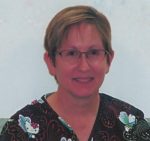The Monty Hall Problem
The Monty Hall Problem
Probability: Dependent
When the television game show, “Let’s Make a Deal,” first started, it was hosted by Monty Hall. It originally aired from December 30, 1963 to December 27, 1968, then in syndication off and on until 1991, with Hall as host. In 2001, Let’s Make a Deal was ranked #18 on TV Guide’s list of the 50 Greatest Game Shows of All Time. Though Hall is no longer host, the show still airs today.
There are several deals contestants can participate in, leading a winner to the point where they can join the Big Deal. In the Big Deal, if contestants guess the right one of three doors, they get a prize that might be as expensive as a car or a vacation trip, furniture or luxury clothes. Otherwise, they get a very small prize. Sometimes, the host opens one of the doors the contestant didn’t pick to reveal one of the smaller prizes and asks if they want to change their pick to the other door. The host knows where the prize is.
This is called the Monty Hall problem. What would you do?
Materials
- 1 M&M (optional: jelly bean or other small piece of candy or prize)
- 3 coffee cups that you cannot see through
Instructions
- Grandma hides the candy under one of the cups, where grandchild cannot see which one it is going under
- Grandma asks grandchild to guess which cup has the M&M in it
- Grandchild taps the top of one of the three cups, without picking it up.
- Grandma picks up one of the empty cups, not the one the grandchild has picked, to show that it is empty
- Grandma asks grandchild if they want to stick with the cup they picked or switch to the other one
- Whichever cup they pick, they can pick it up and find out if there is candy under it.
What Should Happen?
Your grandchild will have twice as much chance of winning the prize if they switch from their original answer to the other cup.
Why? In the first pick, they had a one in three chance of picking the prize (one out of three cups). But, they had a two out of three chance to pick the empty one. Since they now know where one of the empty ones is, because Grandma showed it, the probability that their original pick is good is now only one out of three. While the chance that the other cup is good is now two out of three. This is dependent on the fact that they now know what one of the cups represents, so the probability of being right on their first pick has changed.
To understand why this is, let’s look back at the one out of three or two out of three chances we started with. Originally, any random pick had a one out of three chance of hiding the M&M. And, either of the other two picks had a two out of three chance of being empty. Once one of the empty cups was revealed, though, the original, random pick changed to being a one out of three chance of being empty. This leaves a two out of three chance that the other cup has the candy, because you know where one of the empty cups is.
There is another way to look at this to illustrate what is happening. What happens if you always switch or always stay with your original pick? For simplicity purposes, you can lay this out in six games, always picking cup number 1. For the first three games, you always switch. For the second three, you always stay with the first cup. You could do the same thing if you started with cups two or three.
- Game 1: Cup 1 has candy. Cups two and three are empty. Whether two or three is revealed as empty, f you switch from cup 1, you lose
- Game 2: Cup 2 has candy. Cups one and three are empty. Only cup three can be revealed as empty because you picked cup 1. If you switch from cup 1, you win
- Game 3: Cup 3 has candy. Cups one and two are empty. Only cup two can be revealed as empty because you picked cup one. If you switch from cup 1, you win.
- Game 4: Cup 1 has candy. Cups two and three are empty. You stay and win.
- Game 5: Cup 2 has candy. Cups one and three are empty. You stay and lose.
- Game 6: Cup 3 has candy. Cups one and two are empty. You stay and lose.
If you add up all the results, you win half of the time. And, this is the intuitive answer for most people to this problem.
But, if you just look at the times you switch, you win two out of three times when you switch and lose two out of three times if you stay with your original pick.
Because the question is not, what is the probability that one of the two remaining cups has the candy? (1/2)
The question is given that cup number whatever Grandma turned over is empty, what is the probability that the cup I picked first has the candy? (1/3)
And that makes all the difference.
Why Is This Useful?
When Marilyn vos Savant, who has the highest recorded IQ, first posed this problem and her answer in her column in Parade magazine in 1990, she had Ph.D. mathematicians calling her to task for printing false information. Much discussion followed and now the problem has been demonstrated sufficiently that she is no longer being held in contempt by mathematicians. So, if the smartest person in the world had trouble convincing mathematicians of the logic behind her answer, why is it even important to understand probability?
Probability is used when deciding whether to administer routine medical tests for diagnosing diseases. Even if the false positives and false negatives are low, a requirement for a good test, if you are testing a large population, these can represent a high number. This was the dilemma faced by the medical community recently when looking at the guidelines for routine mammograms for all women over 40 or all women over 50. The question they had to answer was, given the known number of false negatives and false positives, how many women will be helped compared to those who will be given inaccurate information, with the stress and expense that entails. Though the American Cancer Society ultimately came down on the side of continuing to recommend mammograms for women over 40 and the Mayo Clinic supports this, the U.S. Preventive Services Task Force changed their recommendations for widespread mammograms for women over 50 and mammograms for women over 40 only if they are in a high risk category, such as having cancer in their family or having the BRCA gene.
Thanks to Marilyn vos Savant for her clear explanation for the solution to this problem. Thanks also to Khan Academy for laying out the problem.
Carol Covin, Granny-Guru
Author, “Who Gets to Name Grandma? The Wisdom of Mothers and Grandmothers”
http://newgrandmas.com
Filed in: education




As always, my math appreciation has grown as the result of another enlightening math post.
This one was tough to wrestle to the ground, Jeri, because like most people, I couldn't understand why your chances weren't 50/50. But, when you realize that the host always knows where the empty door is, you can understand why the odds change.
Very interesting, thanks for the insight. I knew where you were leading with the probability theory but I really liked the introduction with Monty Hall! My boys are GLUED to the screen whenever it's on.
Thanks, Nami. Love that this has been such a long-running show, and now your boys can understand a little more about the math behind it!
I love this kind of stuff. It brings back some really great memories of my first grade class and some of the fun things we did. The fact is I love puzzles and math problems that have a fun solution and process. This is well done. 🙂
I love the way your fun exercises have a lesson in them Cheryl. This is another great example.
First I have to say, love your new picture Cheryl. Interesting tie in from the M&M game with children to the meaning in something I can relate more to, those certainly male created tests, mammograms. Thanks Cheryl.
I would've thought gone with the dissenters who say your odds don't really change because now that there are only two cups left, you have a 50% chance of winning!! However, I guess if you look at it from the original 1 of three pick and move to a one of two pick, your odds are much better. I think I'm still confused though.